Concept explainers
Determine the shapes of each of the following moleculesand then, using the data in table 2.2 state whether each is expected to be polar or not: (a)
Want to see the full answer?
Check out a sample textbook solution
Chapter 2 Solutions
Inorganic Chemistry
Additional Science Textbook Solutions
Organic Chemistry As a Second Language: Second Semester Topics
General Chemistry: Atoms First
Chemistry
Fundamentals of Heat and Mass Transfer
EBK INTRODUCTION TO CHEMISTRY
- Consider the following molecules: SiH4, PH3, H2S. In each case, a central atom is surrounded by four electron pairs. In which of these molecules would you expect the bond angle to be less than 109.5? Explain your reasoning.arrow_forwardIt is possible to write a simple Lewis structure for the SO42- ion, involving only single bonds, which follows the octet rule. However, Linus Pauling and others have suggested an alternative structure, involving double bonds, in which the sulfur atom is surrounded by six electron pairs. (a) Draw the two Lewis structures. (b) What geometries are predicted for the two structures? (c) What is the hybridization of sulfur in each case? (d) What are the formal charges of the atoms in the two structures?arrow_forwardA neutral molecule is identified as a tetrafluoride, XF4, where X is an unknown atom. If the molocule has a dipole moment of 0.63 D, can you give some possibilities for the identity of X?arrow_forward
- What are the relationships among bond order, bond energy, and bond length? Which of these quantities can be measured?arrow_forwardWhich of these molecules have an odd number of valence electrons: NO2, SCl2, NH3, NO3?arrow_forwardFollowing are the structures of three isomers of difluorobenzene, C6H4F2. Are any of them nonpolar?arrow_forward
- Could the anion Li2 exist? What is the ions bond order?arrow_forwardHistidine is an essential amino acid that the body uses to form proteins. The Lewis structure of histidine follows. What are the approximate values for bond angles 1 through 5 (indicated on the structure by blue numbers)?arrow_forwardThe cations O2+ and N2+ are formed when molecules of O2 and N2 are subjected to intense, high-energy solar radiation in Earths upper atmosphere. Write the electron configuration for O2+. Predict its bond order and magnetic behavior.arrow_forward
- (a) Complete the Lewis structure for the molecule shown below. How many lone pairs are there? H-C H 1 H (b) Give the hybridizations of the following atoms in the structure: (i) Ca; (ii) Ob (c) Give approximate values of the following bond angles: (i) O a-Ca-Ob; (ii) С a -О b-Сbarrow_forwardPredict whether these molecules are polar or nonpolar: (a) BrCl, (b) SO2, (c) SF6.arrow_forwardCI CI CFs CF, „CF3 F;C ·P. CF CF's CF `CHI, F,C CH3 F,C By considering the trans effect in trigonal bipyramidal, arrange the following in order of increasing P-CI bond length.arrow_forward
 Chemistry: Principles and ReactionsChemistryISBN:9781305079373Author:William L. Masterton, Cecile N. HurleyPublisher:Cengage Learning
Chemistry: Principles and ReactionsChemistryISBN:9781305079373Author:William L. Masterton, Cecile N. HurleyPublisher:Cengage Learning Chemistry: Principles and PracticeChemistryISBN:9780534420123Author:Daniel L. Reger, Scott R. Goode, David W. Ball, Edward MercerPublisher:Cengage Learning
Chemistry: Principles and PracticeChemistryISBN:9780534420123Author:Daniel L. Reger, Scott R. Goode, David W. Ball, Edward MercerPublisher:Cengage Learning Chemistry: The Molecular ScienceChemistryISBN:9781285199047Author:John W. Moore, Conrad L. StanitskiPublisher:Cengage Learning
Chemistry: The Molecular ScienceChemistryISBN:9781285199047Author:John W. Moore, Conrad L. StanitskiPublisher:Cengage Learning ChemistryChemistryISBN:9781305957404Author:Steven S. Zumdahl, Susan A. Zumdahl, Donald J. DeCostePublisher:Cengage Learning
ChemistryChemistryISBN:9781305957404Author:Steven S. Zumdahl, Susan A. Zumdahl, Donald J. DeCostePublisher:Cengage Learning
 Chemistry: An Atoms First ApproachChemistryISBN:9781305079243Author:Steven S. Zumdahl, Susan A. ZumdahlPublisher:Cengage Learning
Chemistry: An Atoms First ApproachChemistryISBN:9781305079243Author:Steven S. Zumdahl, Susan A. ZumdahlPublisher:Cengage Learning





